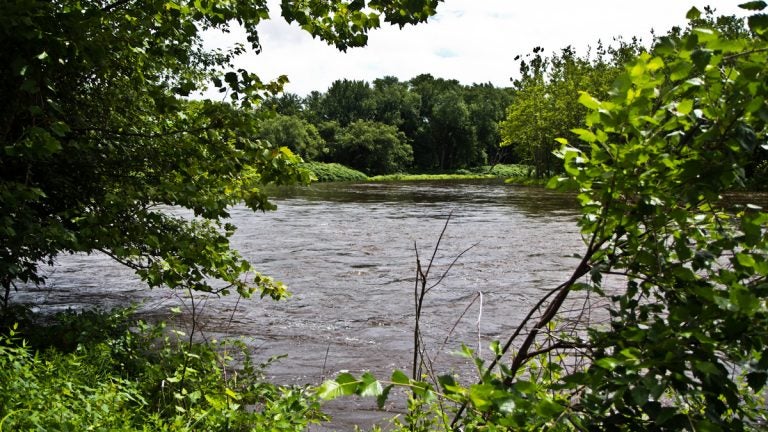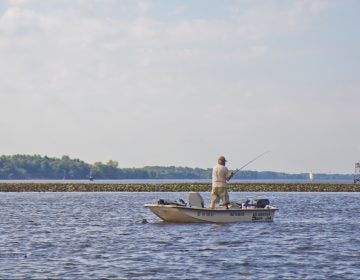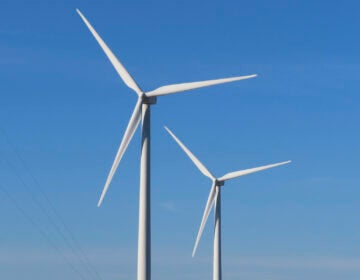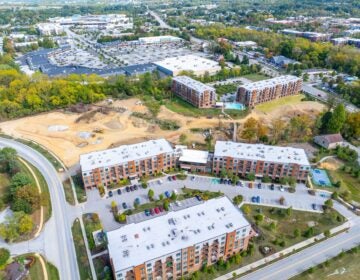Delaware outlines plans to restore the state’s wetlands
Delaware’s Inland Bays wetlands has faced significant losses. The state’s environmental agency hopes to restore and conserve the watershed by improving land management.

Delaware Water Gap. (Kim Paynter/WHYYNews)
Delaware’s Inland Bays are a crucial part of the state’s economy and environmental health, representing 20 percent of the state’s overall wetlands.
The wetlands act as a buffer against storms and flooding, provide crucial habitat for wildlife and plant species, improve water quality, and are a space for recreational and commercial fishing.
But between 2007 and 2017, there was a net loss of 481 acres of non-tidal wetlands in the Inland Bays, likely because of development, agriculture, and forest clearing, experts say. And though tidal wetlands gained acres, due to marsh migration inland, many became non-vegetated, likely because of erosion and sea-level rise.
To offset those issues, the Delaware Department of Natural Resources and Environmental Control (DNREC), in partnership with local conservation groups, have released extensive restoration and conservation strategies. The 59-page Inland Bays Wetland Restoration Strategy, announced Monday, outlines several recommendations, such as preserving wetlands with easements or land acquisition, and improving land use planning. Other strategies include practicing reforestation and sustainable forestry, restoring shorelines to their original state, and controlling invasive species.
“The consequences of losing tidal wetlands is you’re losing the water quality benefits, because we have forests along our rivers and our streams, and that is providing a nice buffer habitat. For wildlife and plants sake, you’re disrupting and fragmenting that habitat. And [you’re losing] the flood flooding protection as well,” said Alison Rogerson, the wetlands program manager at the state’s DNREC.
Land acquisition would involve the state or an organization purchasing land to protect it from development or other changes. Another option is incentivizing landowners to commit to conserving and protecting land, Rogerson said.
Wetlands have been significantly impacted by development, which is difficult to restrict, Rogerson added. In Delaware, freshwater wetlands are not regulated by DNREC, and instead are controlled at the federal level. Rogerson urges increased enforcement, and calls for the state to have the authority to regulate wetlands. (Delaware is the only state in the mid-Atlantic that does not have a freshwater wetland protection program.)
The biggest hurdle to achieving the strategies, Rogerson said, is changing a culture that doesn’t always prioritize conservation and restoration above economic needs.
“If everybody had a mental shift and understood how important wetlands and submerged aquatic vegetation were for our water quality and our flood protection and our habitat, it would be easier to come up with the funding to do these restoration strategy action items. And it would be easier to avoid wetland impacts in the future,” she said.
She said incentivizing landowners to get on board has been particularly challenging.
“If we had a mental shift and a prioritization, we would have more willing landowners as well,” she said. “That’s not like changing laws or coming up with millions of dollars. That’s really on us to just realize how important it is and make it a priority.”
There are plenty of opportunities for private landowners, whether they live along the water or not, to help improve the watershed, Rogerson added.
“Understanding that a watershed starts all the way at the top and drains all the way out, that everything you do from fertilizing and treating your lawn and washing your car and having that runoff go down the sewer — everything matters,” she said.
WHYY is your source for fact-based, in-depth journalism and information. As a nonprofit organization, we rely on financial support from readers like you. Please give today.







